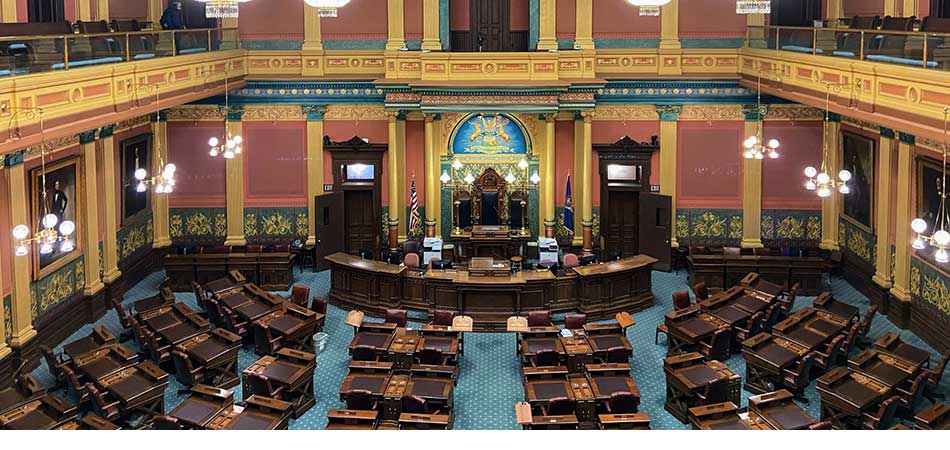Today, the directors of the House and Senate Fiscal Agencies, State Treasurer Rachael Eubanks, and State Budget Director Jen Flood came together to reach a consensus on projected state revenue for the upcoming fiscal year. At the biannual Consensus Revenue Estimating Conference (CREC), the principals heard testimony from various economic experts on the key aspects of the state and national economies that will impact state revenue. They all agreed there is a lot of uncertainty in the economy.
Experts looked at the changing economic landscape and revenue numbers for the beginning of the year to revise the estimates adopted at January’s CREC. In FY 2025, revenue to the state’s General Fund-General Purpose (GF-GP) was revised down $221.6 million from prior estimates, FY 2026 was also revised down $363.1 million, and FY 2027 was reduced by $399.8 million. However, estimates for revenue dedicated to Michigan’s School Aid Fund (SAF) were increased: $85.6 million for FY 2025, $42.8 million for FY 2026, and $44.1 million for FY 2027.
When combined, revenue estimates were lowered from January’s projections for the upcoming fiscal years by $136 million for FY 2025, $320.3 million for FY 2026, and $355.7 million for FY 2027.
National:
-
- Inflation has eased for now, but long-term expectations have ticked up.
- Consumer sentiment has declined, causing concern.
- The tariffs have delayed inflation normalization.
- Tariffs are projected to impact consumption this summer.
- Real GDP growth is expected to soften.
- Payroll employment gains are projected to decelerate.
Michigan:
-
- While vehicle sales spiked after tariffs were announced, a future decline is expected.
- The unemployment rate is expected to peak at 6% next year.
- Labor demand has gone below pre-pandemic levels.
- The risk of a downturn is higher than the experts would like.
- Real disposable income is slightly below the trend.
- The growth in the sales and use tax was reduced from an estimated 1.5% at January’s CREC to 0.9%.
- There are no pay-ins projected to the Budget Stabilization Fund for the next three years, however, there is a potential payout of up to $538.5 million in FY 2026.
Risks to the forecast include future tariff policy, an evolving fiscal landscape, the labor market is more vulnerable to negative shocks, and ongoing geopolitical risks.
The House, Senate, and administration will use the agreed-upon numbers as they continue working on the state budget for the upcoming 2025-2026 Fiscal Year.
To view the documents and presentations from today’s conference, please click here.








